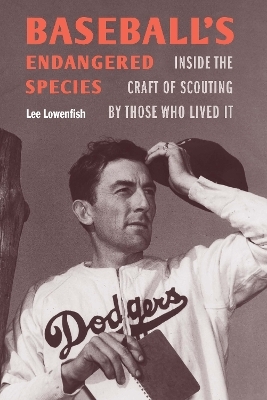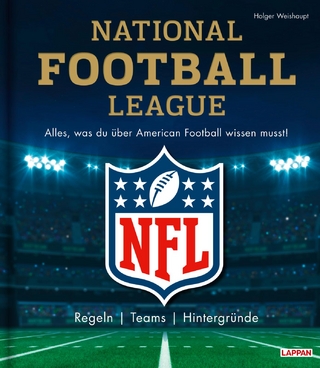
Baseball's Endangered Species
University of Nebraska Press (Verlag)
978-1-4962-1481-2 (ISBN)
Named a Best Baseball Book of 2023 by Sports Collectors Digest
Scouting has been called pro baseball’s personalized way of renewing itself from year to year and a pathway to the game’s past. It takes a very special person to be a baseball scout: normal family life is out of the question because travel is a constant companion. Yet for those with the genuine calling for it, there could be no other life. Hearing the special thwack off the bat that indicates a raw prospect may be the real deal is the dream that keeps true scouts going. Scouts have the difficult task of not only discovering and signing new players but envisioning the trajectory of raw talent into the future. But the place of the traditional scout has become increasingly dire.
In 2016 Major League Baseball eliminated the MLB Scouting Bureau that had been created in the 1970s to augment the regular scouting staffs of individual teams. On the eve of the 2017 playoffs that saw the Houston Astros crowned as World Series champions, the team dismissed ten professional scouts and by 2019 halved the number of all their scouts to less than twenty. More and more teams are replacing their experienced talent hunters with people versed in digital video and analytics but who have limited field knowledge of the game, driven by the Moneyball-inspired trend to favor analytics, data, and algorithms over instinct and observation.
In Baseball’s Endangered Species Lee Lowenfish explores in-depth how scouting has been affected by the surging use of metrics along with other changes in modern baseball business history: expansion of the Major Leagues in 1961 and 1962, the introduction of the amateur free agent draft in 1965, and the coming of Major League free agency after the 1976 season. With an approach that is part historical, biographical, and oral history, Baseball’s Endangered Species is a comprehensive look at the scouting profession and the tradition of hands-on evaluation. At a time when baseball is drenched with statistics, many of them redundant or of questionable value, Lowenfish explores through the eyes and ears of scouts the vital question of “makeup”: how a player copes with failure, baseball’s essential, painful truth.
Lee Lowenfish is a freelance writer and cultural historian. He is the author of Branch Rickey: Baseball’s Ferocious Gentleman (Bison Books, 2009) and The Imperfect Diamond: A History of Baseball’s Labor Wars (Bison Books, 2010). He lives in New York City.
Acknowledgments
Introduction
Prologue
Part 1. The Cardinals-Yankees Rivalry That Dominates Baseball, 1919–1964
1. Charley Barrett and the Rise of Branch Rickey’s Farm System
2. Paul Krichell and the Rise of the Yankees’ Dynasties
Part 2. Tales from Baseball Expansion Era
3. Red Murff Joins the Scouting Brotherhood with Mets and Expos
4. Art Stewart and the Rise of the Kansas City Royals Expansion Franchise
Part 3. Two Veteran Scouts Bookend Three Baseball Monogamists
5. Gary Nickels’s Half Century of Scouting Adventures
6. Paul Snyder, the Braves’ Branch Rickey
7. Gene Bennett’s Love Affair with the Cincinnati Reds
8. Billy Blitzer Finally Wins His Chicago Cubs’ Ring
9. Bill Enos’s Roundabout Journey to Massachusetts Scouting Immortality
Notes
Bibliography
Index
| Erscheinungsdatum | 21.02.2023 |
|---|---|
| Zusatzinfo | 19 photographs, index |
| Verlagsort | Lincoln |
| Sprache | englisch |
| Maße | 152 x 229 mm |
| Themenwelt | Sachbuch/Ratgeber ► Sport ► Ballsport |
| Weitere Fachgebiete ► Sportwissenschaft | |
| ISBN-10 | 1-4962-1481-1 / 1496214811 |
| ISBN-13 | 978-1-4962-1481-2 / 9781496214812 |
| Zustand | Neuware |
| Informationen gemäß Produktsicherheitsverordnung (GPSR) | |
| Haben Sie eine Frage zum Produkt? |
aus dem Bereich


